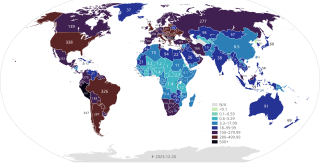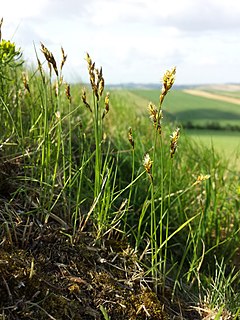
Clover or trefoil are common names for plants of the genus Trifolium, consisting of about 300 species of flowering plants in the legume or pea family Fabaceae originating in Europe. The genus has a cosmopolitan distribution with highest diversity in the temperate Northern Hemisphere, but many species also occur in South America and Africa, including at high altitudes on mountains in the tropics. They are small annual, biennial, or short-lived perennial herbaceous plants, typically growing up to 30 cm tall. The clover is the color of evergreen. The leaves are trifoliate, cinquefoil, or septfoil, with stipules adnate to the leaf-stalk, and heads or dense spikes of small red, purple, white, or yellow flowers; the small, few-seeded pods are enclosed in the calyx. Other closely related genera often called clovers include Melilotus and Medicago.

Hepatica is a genus of herbaceous perennials in the buttercup family, native to central and northern Europe, Asia and eastern North America. Some botanists include Hepatica within a wider interpretation of Anemone.

Hevea brasiliensis, the Pará rubber tree, sharinga tree, seringueira, or, most commonly, the rubber tree or rubber plant, is a flowering plant belonging to the spurge family Euphorbiaceae. It is the most economically important member of the genus Hevea because the milky latex extracted from the tree is the primary source of natural rubber.

Ajuga, also known as bugleweed, ground pine, carpet bugle, or just bugle, is a genus of 40 species annual and perennial herbaceous flowering plants in the Ajugeae tribe of the mint family Lamiaceae, with most species native to Europe, Asia, and Africa, but also two species in southeastern Australia. They grow to 5–50 cm tall, with opposite leaves.

Johann Christian Daniel von Schreber, often styled J.C.D. von Schreber, was a German naturalist.

The subfamily Detarioideae is one of the subdivisions of the plant family Fabaceae (legumes). This subfamily includes many tropical trees, some of which are used for timber or have ecological importance. The subfamily consists of 84 genera, most of which are native to Africa and Asia. Pride of Burma and tamarind are two of the most notable species in Detarioideae. It has the following clade-based definition:
The most inclusive crown clade containing Goniorrhachis marginataTaub. and Aphanocalyx cynometroidesOliv., but not Cercis canadensisL., Duparquetia orchidaceaBaill., or Bobgunnia fistuloides(Harms) J. H. Kirkbr. & Wiersema.

Barbilophozia is a liverwort genus in the family Scapaniaceae.

"Ohio" is a protest song and counterculture anthem written and composed by Neil Young in reaction to the Kent State shootings of May 4, 1970, and performed by Crosby, Stills, Nash & Young. It was released as a single, backed with Stephen Stills's "Find the Cost of Freedom", peaking at number 14 on the US Billboard Hot 100 and number 16 in Canada. Although a live version of "Ohio" was included on the group's 1971 double album 4 Way Street, the studio versions of both songs did not appear on an LP until the group's compilation So Far was released in 1974. The song also appeared on the Neil Young compilation albums Decade, released in 1977, and Greatest Hits, released in 2004.
Laura Anderson Barbata is a contemporary artist. Based in Brooklyn and Mexico City, Barbata's work uses art and performance to encourage social justice by documenting traditions and involving communities in her practice.

This article provides a general overview and documents the status of locations affected by the severe acute respiratory syndrome coronavirus 2 (SARS-CoV-2), the virus which causes coronavirus disease 2019 (COVID-19) and is responsible for the COVID-19 pandemic. The first human cases of COVID-19 were identified in Wuhan, the capital of the province of Hubei in China in December 2019. The most recent country or territory to report its first confirmed case was the Federated States of Micronesia on 8 January 2021.

Severe acute respiratory syndrome coronavirus 2 (SARS-CoV-2), the virus that causes coronavirus disease 2019 (COVID-19), has many variants; some are or have been believed to be of particular importance. This article discusses such notable variants of SARS-CoV-2.

Carex praecox, the spring sedge, is a species of flowering plant in the genus Carex, native to Europe, western Asia, and Mongolia. Its chromosome number is 2n=58, with some uncertainty.

Carex bohemica is a species of sedge, native to Europe, Siberia, and northern Asia to Japan. It prefers to grow in mud flats.
Acaulon muticum is a species of moss belonging to the family Pottiaceae.

Sofiya Kovalets is a former Russian-born Ukrainian tennis player.
Pogonota barbata is a species of fly belonging to the family Scathophagidae.
Barbilophozia attenuata is a species of liverwort belonging to the family Anastrophyllaceae.













